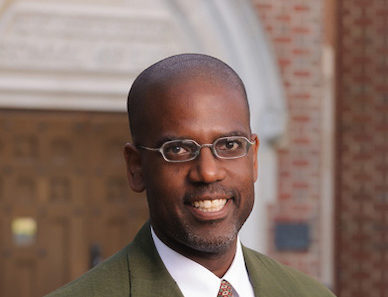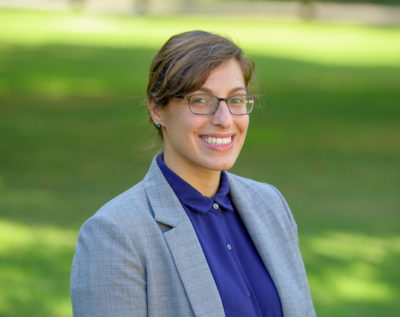Mar 14, 2024 Margaret KwokaAdministrative Law
Rebecca Green,
FOIA-Flooded Elections, 85
Ohio St. L.J. __ (forthcoming 2024); William & Mary L. Sch. Rsch. Paper No. 09-478, available at
SSRN (Oct. 3, 2023).
The Freedom of Information Act (FOIA) has been the subject of increasing controversy. Some scholars, like Mark Fenster in his recent illuminating work on transparency and populism, remain convinced it holds a singular place in protecting democracy and promoting accountability. Others, like Dave Pozen, are concerned it promotes regressive, anti-public-spirited outcomes. While my own work has defended FOIA’s continued indispensability, my research on who uses FOIA and why (upshot, it’s not journalists) is often cited as demonstrating that the law does not deliver the value we hope it will.
However, these larger structural critiques often set aside a nagging practical problem that can, at times, become centrally important: the use of FOIA for abuse and harassment of agency officials. In my own work, I have noted that occasional problems of this natures arise mostly with respect to state agencies, in particular public universities, in a way that it does not tend to at the federal level. But I have largely considered the issue an anomaly not necessarily meriting more structural reform. Still, instances involving alleged abusive FOIA requesters have seemingly been on the rise, moving behind the historic examples of targeting particular research at higher education institutions and now reaching into K-12 educational settings with respect to controversial curricula and, now, election officials. Enter Rebecca Green’s terrific new piece, FOIA-Flooded Elections, which takes on this seemingly intractable problem of abusive FOIA requests in the context of state and local election officials. Continue reading "Confronting FOIA Abuse"
Mar 13, 2024 Henry L. Chambers, Jr.Work Law
In Limitation of the “Four-Fifths Rule” and Statistical Parity Tests for Measuring Fairness, authors Manish Raghavan & Pauline T. Kim critique the use of the four-fifths test and other statistical parity tests (SPTs) in employment decision making. The article discusses how SPTs have been used historically to identify adverse impact as part of a disparate impact discrimination inquiry and how SPTs are being used now, and how that may obscure algorithmic discrimination.
The article is intriguing because it discusses where we have been, where we are, and where we may be going regarding the use of SPTs and algorithmic discrimination. That is especially important because the use of algorithms in employment decision making is likely here to stay. Algorithms can be used to screen job applicants for later evaluation or to rank job applicants for sequential hiring or for other purposes. Concerns regarding the possibility of discrimination through algorithmic use are common. Indeed, various jurisdictions, including New York City, require audits of employment selection algorithms before they are used. Continue reading "Creating New Tools to Help Build Nondiscriminatory Algorithms"
Mar 12, 2024 Sarah BursteinIntellectual Property Law
Persons having ordinary skill in the art (PHOSITAs) play a number of important roles in patent law. The validity of a patent may, for instance, depend on whether PHOSITAs would likely have developed the claimed invention. A PHOSITA is a hypothetical person, like the “reasonable person” in torts. But are they also (effectively) White? If so, what does that mean for our patent system? These aren’t entirely new questions, as past articles (including these) have at least raised the issue. Goodman and Patterson enrich this literature with two case studies involving patent applications for useful inventions related to Black hair care. They show how cultural gaps between Black inventors and (mostly White) patent attorneys and patent examiners can create significant hurdles to effective patent protection.
This is mainly due to how patent protection is obtained. Unlike a copyright, which arises automatically when the conditions of the Copyright Act are satisfied, a patent must be granted by the U.S. Patent & Trademark Office (USPTO). To obtain a patent, an inventor or their assignee must submit an application which is then substantively examined by a person with technical skill in the relevant area. The process is complex enough that applicants generally seek the services of a patent attorney or agent to help them draft and prosecute the application. Continue reading "The (White) Person of Skill in the Art?"
Mar 11, 2024 Kenneth W. SimonsTorts
A common but troublesome factual cause problem arises in the following medical malpractice scenario. A doctor negligently treats or fails to diagnose a patient’s medical condition, and the patient dies or suffers serious harm from the condition. The patient (or the patient’s family) can prove that due care might have prevented that harm but cannot prove this causal link by a preponderance of the evidence. In recent years, most courts have responded to this “loss of a chance” of a better medical outcome (LOC) problem not by denying all liability, and not by awarding full damages, but instead by awarding partial damages. Most scholars, and the most recent drafts of two Restatement Third, Torts projects, endorse this response.
In her illuminating and provocative article, Damned Causation, Professor Elissa Philip Gentry takes a different tack. She is deeply skeptical of overreliance on general statistics in LOC cases and urges a more nuanced approach, an approach that grants much greater discretion to the jury. In the course of her careful analysis, Gentry clarifies the complex statistical issues that these cases raise and offers a promising alternative to current judicial practice. Continue reading "Refining the Use of Probabilistic Evidence in Loss of a Chance Cases"
Mar 8, 2024 Susan MorseTax Law
Ariel Jurow Kleiman and Shayak Sarkar & Emily Satterthwaite, Taxing Nannies, Loyola Law School, Los Angeles Legal Studies Research Paper No. 2024-03, available at
SSRN (January 26, 2024).
Workers who provide child care in children’ homes—that is, nannies—should almost always be “formal” workers based on existing law. But in fact they are almost always treated as “informal” workers paid off the books and not as employees. Formality would mean more work law protection – that is, from labor, employment, and social insurance law. But it would also mean more income and payroll taxes.
Is going formal worth it?
In Taxing Nannies, Ariel Jurow Kleiman, Shayak Sarkar, and Emily Satterthwaite consider this question from an obvious yet original perspective. They focus on the preferences and welfare of nannies, not hirers. Their empirical work shows that some nannies strongly prefer formality. It also suggests that the market assumes informality and quotes compensation on an after-tax basis. A tax incidence negotiation between nannies and hirers results over how to split the tax burden of going formal, and diverse solutions follow. Continue reading "Going Formal: The Tax Lives of Nannies"
Mar 7, 2024 Paul OhmTechnology Law
Emily Black, John Logan Koepke, Pauline T. Kim, Solon Barocas & Mingwei Hsu,
Less Discriminatory Algorithms, __
Geo. L.J. __ (forthcoming);
Wash. U. Legal Studies Rsch. Paper (forthcoming), available at
SSRN (Oct. 2, 2023).
We are likely to see as many new law review articles about artificial intelligence and law in the next year as the legal academy has produced since the dawn of AI. Those writing about AI for the very first time (*eyes a bunch of copyright scholars suspiciously*) would do well to engage deeply with the work of bias and discrimination scholars who have been writing some of the best, most insightful articles about AI and law for more than a decade. The frameworks and insights they have developed give us a way of thinking about AI law and policy beyond just considerations about Title VII and Equal Protection. A wonderful place to start is with the best contribution to this scholarship I have seen in years, Less Discriminatory Algorithms, by an interdisciplinary team of technical, policy, and legal experts.
This article is a form of my favorite genre of legal scholarship: “you all are making an important mistake about how the technology works.” In particular, it takes on the received wisdom that there is a vexing tradeoff between fairness and accuracy when training machine learning models. This supposed tradeoff—that in order to make a biased algorithm fairer, you need to sacrifice some of the model’s accuracy—may be true in theory for idealized and never-seen-in-the-wild maximally accurate models. But nobody ever has the time, compute, money, or energy to even approach this ideal, meaning real models out in the world are far from maximally accurate. People instead declare success as soon as their models are just accurate enough for their purposes. Continue reading "Debunking AI’s Supposed Fairness-accuracy Tradeoff"
Mar 6, 2024 Andrea BoyackProperty
John Infranca’s recent article, Singling Out Single-Family Zoning, recounts and critiques the foundational legal arguments underlying the advent and dominance of single-family zoning. His insightful framing of this historical perspective is especially valuable in the context of today’s debates about the impacts and future of single-family zoning.
A century ago, localities, land use professionals, and lawyers innovated zoning systems that created protected enclaves for single-family detached homes, isolating these residences from multifamily residential, commercial, and industrial uses. In the 1920s, courts considered and ultimately upheld such land use schemes in opinions that include the seminal 1926 Supreme Court decision of Village of Euclid v. Ambler Realty. Once U.S. courts generally accepted that single-family zoning was a valid exercise of a municipality’s police power, this type of zoning proliferated throughout the country, becoming the unique and defining feature of American land use. But the ubiquity of single-family zoning in the United States obscures its legally questionable foundation. Continue reading "One Hundred Years of Solitude: A Reconsideration of Single-Family Zoning"
Mar 5, 2024 Aila HossLexNative Peoples Law
Professor Troy Andrade chronicles the distressing hundred-year history of the Hawaiian Homes Commission Act in his article, Belated Justice: The Failures and Promise of the Hawaiian Homes Commission Act, published in the American Indian Law Review. This history is marked by racism, the indulging of non-Native business interests, and political retaliation. Professor Andrade describes it as “the journey of a people forced to demand, decade after decade, what they were entitled to by law.”
Prior to European contact, Native Hawaiian social and political structures were based on chiefdoms with communal land ownership and management. European contact, the Western-backed establishment of the Kingdom of Hawai’i, and American colonization disrupted traditional land systems and displaced Native Hawaiians from their homelands. The United States has acknowledged that the annexation of Hawai’i as a territory included the transfer of lands from Native Hawaiians without consent or compensation. Continue reading "Native Hawaiian Homelands for Native Hawaiians"
Mar 4, 2024 Christine BartholomewCourts Law
The 118th Congress has pursued a robust investigatory agenda, probing topics from the origins of COVID-19 to Hunter Biden to “greed in the pharmaceutical industry.” Such investigations are hardly new. But the future utility of such investigations may depend on a cryptic aside made by Chief Justice Roberts in the Court’s 2020 decision in Trump v. Mazars. Roberts stated that recipients of congressional subpoenas “have long been understood to retain common law and constitutional privileges,” including the ability to assert the attorney-client privilege. Scholars have spilled significant ink over the significance—if any—of this statement. In House Rules: Congress and the Attorney-Client Privilege, David Rapallo examines how to best understand Roberts’s statement. In doing so, he delves into an underexamined corner of evidence scholarship: the application of privileges outside of judicial proceedings.
Mazars did not involve an assertion of privilege. Consequently, as Rapallo explains, some scholars dismiss Roberts’ statement as “nothing more than erroneous and ill-informed dictum.” Others view the statement as affording subpoena recipients absolute protection for attorney-client communications, representing a “sweeping change.” It would mean the judiciary—not Congress—decides the evidentiary rules that apply to congressional investigations. While Roberts discussed only the attorney-client privilege, continuing down that road could require Congress to recognize other privileges or evidentiary rules rooted in common law.
Rapallo threads these two extremes by suggesting a third path to understand Roberts’ statement: “[r]ecipients of congressional subpoenas who are compelled to produce information to Congress retain their right to assert the attorney-client privilege in other venues.” For those versed primarily in how privileges work in judicial proceedings, the notion that the attorney-client privilege may not apply to all investigatory proceedings may seem surprising. But Rapallo makes a compelling case from a somewhat surprising starting point: separation of powers. Continue reading "The Attorney-Client Privilege Goes to Washington"
Mar 1, 2024 Taisu ZhangLegal History
There is a traditional narrative about law and legality that scholars have told, in various forms, since the late nineteenth century. In this telling, generalized, formal law emerged as an institutional response to sociopolitical flattening and socioeconomic distancing. As societies transitioned from “status to contract,” abandoning traditional hierarchies in favor of ideals of individual equality, formal equality before the law became more attractive.
Similarly, as economic activities expanded beyond the horizon of closely knit social networks, the institutional need for stranger-oriented transactions and collaboration created immense demand for formal legal institutions that supplied uniformity and reliability across highly diverse socioeconomic terrain. Correspondingly, new ideas of “law,” “legality,” and “the rule of law” emerged.
What has too often been missing from these narratives is a compelling account of the transition itself: how socioeconomic need translated into concrete political, intellectual, institutional change. The idea that demand produces supply over the long term may well be correct, but the specific mechanisms of that supply nonetheless deserve careful study, not least because it tends to affect the final institutional product in both form and substance.
In Redefining the Rule of Law: An Eighteenth-Century Case Study, Christian R. Burset provides a precisely argued, expertly documented, and intellectually sophisticated account of one such mechanism. Through an examination of legal-political dialogue in the eighteenth-century British empire, Burset demonstrates that the specific experience of colonialism generated much of the intellectual and political energy behind modern “rule of law” ideals that have gained both dialogical and institutional dominance in the Anglosphere. Continue reading "Empire of the Rule of Law"















